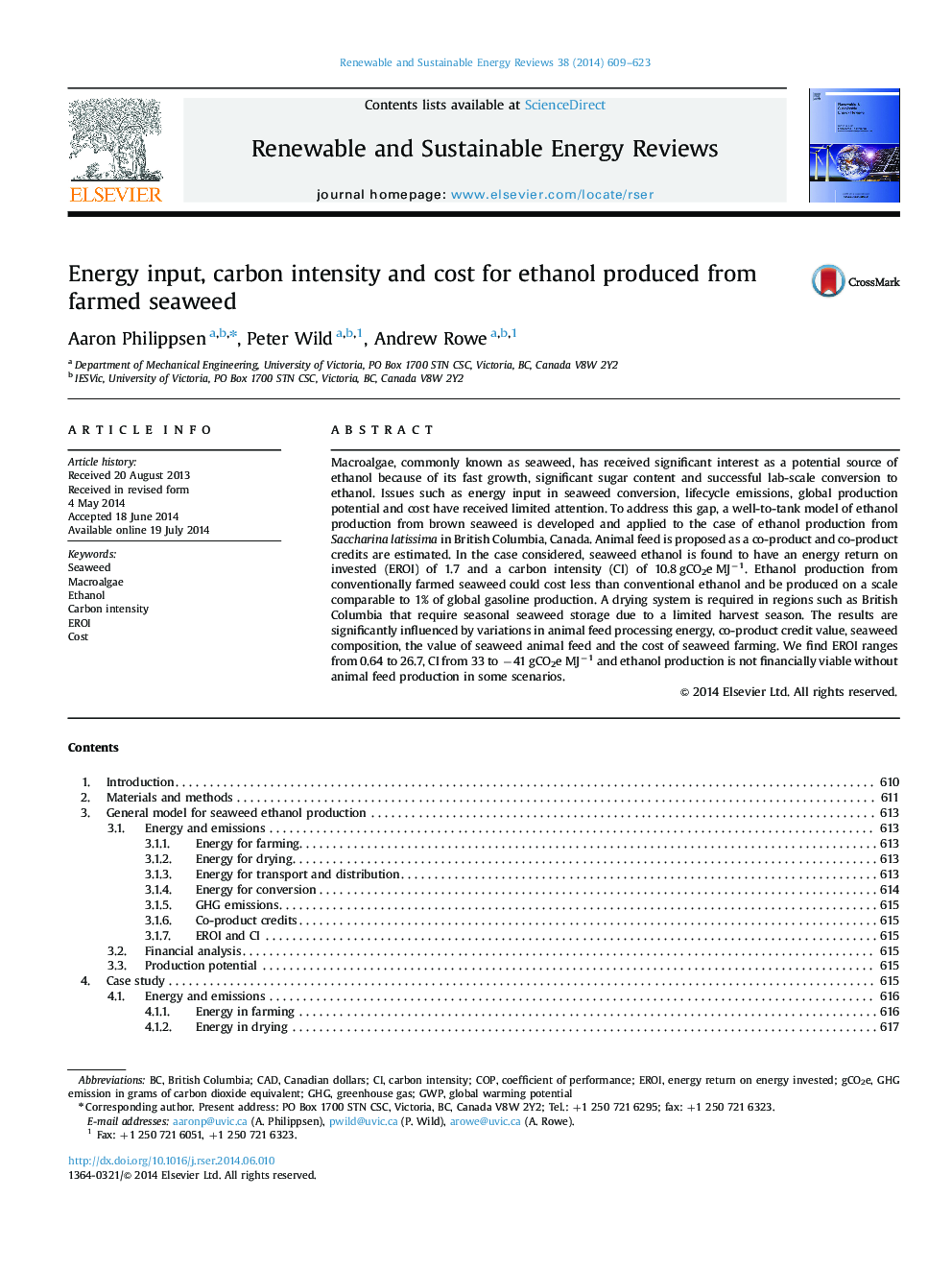| Article ID | Journal | Published Year | Pages | File Type |
|---|---|---|---|---|
| 8119777 | Renewable and Sustainable Energy Reviews | 2014 | 15 Pages |
Abstract
Macroalgae, commonly known as seaweed, has received significant interest as a potential source of ethanol because of its fast growth, significant sugar content and successful lab-scale conversion to ethanol. Issues such as energy input in seaweed conversion, lifecycle emissions, global production potential and cost have received limited attention. To address this gap, a well-to-tank model of ethanol production from brown seaweed is developed and applied to the case of ethanol production from Saccharina latissima in British Columbia, Canada. Animal feed is proposed as a co-product and co-product credits are estimated. In the case considered, seaweed ethanol is found to have an energy return on invested (EROI) of 1.7 and a carbon intensity (CI) of 10.8 gCO2e MJâ1. Ethanol production from conventionally farmed seaweed could cost less than conventional ethanol and be produced on a scale comparable to 1% of global gasoline production. A drying system is required in regions such as British Columbia that require seasonal seaweed storage due to a limited harvest season. The results are significantly influenced by variations in animal feed processing energy, co-product credit value, seaweed composition, the value of seaweed animal feed and the cost of seaweed farming. We find EROI ranges from 0.64 to 26.7, CI from 33 to â41 gCO2e MJâ1 and ethanol production is not financially viable without animal feed production in some scenarios.
Keywords
Related Topics
Physical Sciences and Engineering
Energy
Renewable Energy, Sustainability and the Environment
Authors
Aaron Philippsen, Peter Wild, Andrew Rowe,
